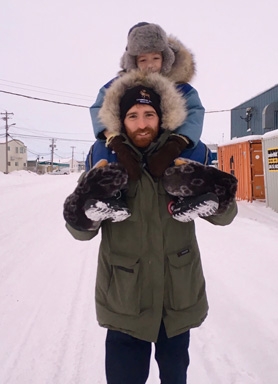Billy Nicoll

In the northern territory of Nunavut, Billy provides a fun atmosphere that brings relevant science to life for students.
Time volunteering with Let’s Talk Science: 2 years
Position: Residence Manager, Nunavut Arctic College
Inspirational Moment: Last year we held a weekend event at the Arctic College in Taloyoak, Nunavut involving a science show, activity stations and a big pot of caribou stew. The event itself was great, but the best part for me was the amazing number of kids who approached us while we were packing up - unprompted by parents or teachers - to directly thank us for the fun.
Favourite Let’s Talk Science volunteering activity: Can’t beat the Blubber Gloves activity (in which lard is used for insulation). [The activity is] very relevant to the north, and very funny for the kids.
Why do you volunteer with Let’s Talk Science? As a kid I was fortunate to have my Dad working at the University of Waterloo, meaning I was often participating in some sort of university open house, science camp or outreach trip. I’ve always found the combination of play, experimentation and learning at these events to be particularly exciting. I volunteer with Let’s Talk Science because it’s fun to see kids experience this same sort of excitement in my current home territory of Nunavut.
Fun fact: If you ever find yourself on the Arctic Ocean, look at the brightness of the clouds. If you are on a snowmobile (and don’t feel like swimming) beware dark clouds in the distance. On the other hand, if you are in a boat (and don’t feel like sinking) beware the bright ones. This is because of the differing reflectivity of ice and open water. The dark clouds - sometimes called “water sky” - indicate a large area of dark, open water beneath them. The bright clouds - or “ice blink” - indicate reflective ice glowing beneath them. This is a great trick and is still used in Arctic Ocean travel. That said, the clouds won’t tell you where the smaller ice or water patches are (or how thin the ice is either) so, you know, look down too...